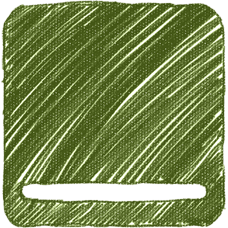Housing

Contents |
Key document
See the section below on additional information.
Aided self build
When people initially move onto their land at the end of the basic product phase, it’s likely that they will quickly build some form of temporary structure to provide basic shelter, but that over time the household will want to continually improve this home.
Consideration needs to be given to the upgradeability of the initial house. This includes how the house can be physically expanded over time, as well as how government funding can be used to top up on what has been built already. For example it is unlikely government will allow their grant money to be used to build walls on a foundation that has not been approved.
The concept of elemental houses can be considered where households use available resources to build some of the more formal elements of the house (like foundations, walls, columns/poles, roof, facades, wet cores, etc.) while using less formal material like corrugated iron and wood as infill. Over time more formal elements can be added.
Municipal building regulations will need to be adhered to when building any formal structures or formal elements of structures.
Government and communities need to consider the establishment of housing support centres where people are provided with examples of building plans and technical building advice, and are supported in arranging for group bulk material purchases. These housing support centres could be linked to local land administration offices, skills training centres, municipal payment points, etc. and become multipurpose centres in the community.
In higher density contexts, with smaller plots, more investigation is needed as to how households can be helped to build incrementally at higher density like, for example, providing shared ablutions, shared side fire walls, double story platform houses, etc.
Upgrade house
The upgrading of the house is only a small component of the much larger process of incremental settlement development. Settlement development is seen as the provision of good public transport facilities and services, and the provision of social and economic facilities and services. Government no longer predominantly emphasis the provision of the house or top structure.
The use of the upgrading of informal settlement grant, following the peoples housing process, is the most likely scenario to be followed when it comes to upgrading houses.
As hinted at in the aided self build activity, government money for housing upgrading does not have to be used just for the development of a new stand alone RDP type house. Given that households have started to build their own house using their own funds the new housing grant can be used to build a new house next to their existing house, add new rooms to an existing house, add additional features to an existing elemental house (like adding on walls to a roof on poles around a wet core house). It is likely that only in a few circumstances will households knock down their old house and build a totally new house.
Houses that are developed in a more incremental way also tend to be more varied and you do not land up with a whole neighbourhood of houses all looking the same. The houses more reflect the needs, personalities and aspirations of those living in the houses. This contributes to people feeling a greater sense of belonging to their neighbourhood.
Continue with aided self development
To recap, the process so far has been one where communities and government have organised for land to be made ready for incremental settlement. Government (and communities) have provided a basic level of planning, services and tenure so households can move onto the land. Households then, on their own and/or with support, use their own money to build temporary and/or permanent homes on this land. They can also if they want grow their own food and run their own businesses. After a period of time (that can be short or long depending on local circumstances) the government comes back and provides additional funding so that tenure, services and houses can be upgraded and improved even further. This is not however the end of the process. The incremental settlement process never ends.
Many of the initiatives that were started during the self development phase, like for example housing support centres, small business advise offices, gardening extension services, etc. can continue into the future.
As households circumstance change (e.g. they have more children, the children move out, properties are sold and new people move into old houses) so too do households continue to modify their environment. New rooms get added and the use to which rooms are used gets changed from bedrooms to offices, etc.
Continuous maintenance is needed by households to prevent them deteriating with weeds and broken windows etc.
The incremental settlement process is different to the RDP housing approach in that settlement development is seen as a continuous process and not a once off project or event. The interaction between government, households and communities continues into the future.
Additional information
You can find links to additional information related to this topic by following the following links:
More still to come
Comments
If you have any comments, questions, thoughts or suggestions for additional information please share them with us by using the comments page.
